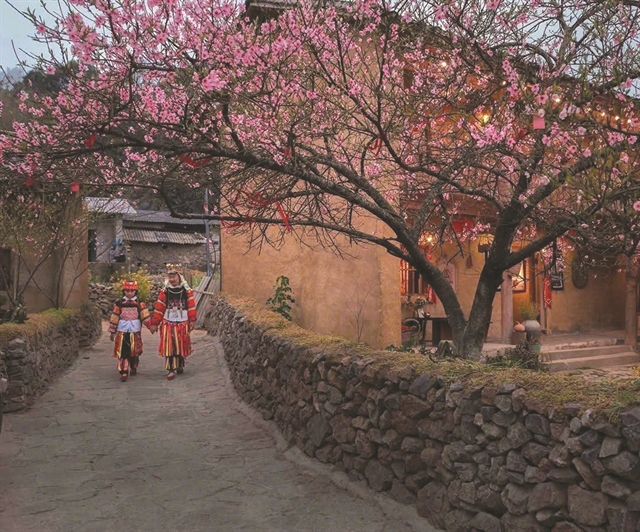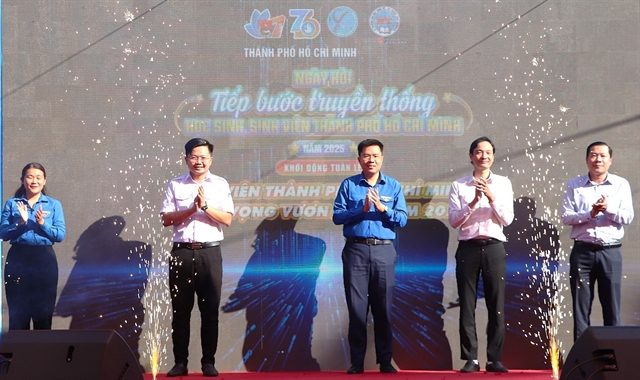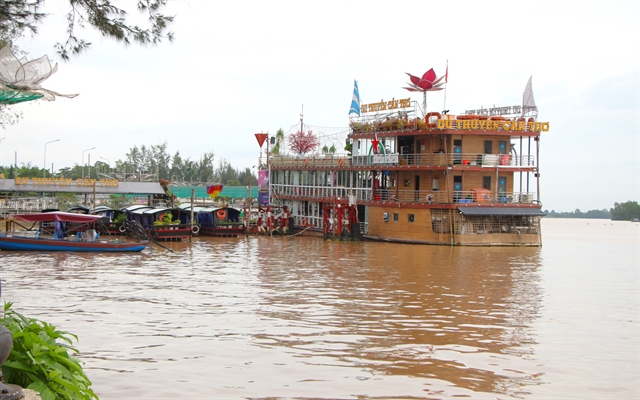 Life & Style
Life & Style

 |
| Ninh Kiều Wharf in Cần Thơ City offers a wide range of tourism products that attract a large number of visitors. VNA/VNS Photo Nguyễn Hằng |
MEKONG DELTA Provinces in the Mekong Delta are capitalising on their rich natural and cultural resources to foster tourism and leveraging the momentum from recent administrative mergers to reshape the region into a leading tourism hub in the south.
According to the Mekong Delta Tourism Association, the region welcomed over 35 million visitors in the first half of 2025, a 17.6 per cent year-on-year increase.
Of these, more than two million were international tourists.
Tourism revenues topped VNĐ53.8 trillion (US$2.1 billion), marking a 54.5 per cent rise from the same period in 2024.
A key driver of this growth is the effective implementation of Government Resolution 82, which outlines core solutions to accelerate tourism recovery and ensure sustainable development.
Local tourism associations have worked with authorities to review and recognise 29 new outstanding tourism destinations, taking the total number to 63.
New interprovincial tours such as the “Four-Season Orchard Tour” (Tiền Giang - Vĩnh Long - Cần Thơ) and the “Waterway and Handicraft Villages Journey” (Sa Đéc - Long Xuyên - Cái Răng) are helping diversify travel offerings.
Ecotourism routes highlighting agricultural experiences have also gained popularity.
The Cồn Én Ecotourism Site in An Giang is one example of recent success.
Designed to harmonise rustic architecture with natural landscapes, the site has steadily grown in popularity since its 2020 debut.
In 2024 it was recognised as a leading tourism destination in the delta.
Its director, Nguyễn Thị Ngọc Yến, said the site is continuously developing green tourism products to meet rising visitor expectations.
The recent merger of Cần Thơ City with Hậu Giang and Sóc Trăng provinces has created a vibrant tourism ecosystem encompassing beach tourism, riverine culture, floating markets, fruit orchards, traditional festivals, local cuisine, and traditional crafts.
This integration has strengthened Cần Thơ’s appeal as a central hub in the delta.
In Cần Thơ’s Ngã Bảy Ward, tourist Nguyễn Thị Thanh Thảo from Đồng Nai Province described her first visit as “a unique and memorable experience”.
Her day included a boat trip through tranquil rivers, a visit to Thiên Ân strawberry farm, a tour of the historic Southern Joint Commission relic, and tastings of local specialities.
She was especially impressed by the confluence of seven rivers, famously referenced in the folk song Tình Anh Bán Chiếu (The Love of a Bed Mat Seller).
“I hope Cần Thơ develops more tour routes connected to Ngã Bảy so visitors can fully explore the culture and hospitality of the delta,” she said.
To further boost the sector, Cần Thơ’s Department of Culture, Sports and Tourism is rolling out incentive packages for travellers, supporting travel businesses in developing new destination links, and organising major cultural and tourism events to enhance visitor experiences and meet the city’s growth ambitions.
 |
| Tourists enjoy river-based tourism experiences in Cần Thơ City, a highlight of the Mekong Delta. VNA/VNS Photo Nguyễn Hằng |
Boosting investment, inter-provincial links
As part of efforts to capitalise on tourism’s post-Covid rebound, local authorities are also intensifying promotional and investment activities.
Nguyễn Văn Bảy, director of the Department of Culture, Sports and Tourism, said the city is reviewing tourism development resolutions from the former provinces of Hậu Giang and Sóc Trăng to come up with a unified tourism strategy.
High-potential sites like Lung Ngọc Hoàng and Nông trường Mùa Xuân are being prioritised for investment.
At the same time efforts are under way to maximise the region’s natural advantages and develop distinctive river-based ecotourism products.
The department also plans to strengthen partnerships with surrounding localities to position Cần Thơ as a regional tourism hub.
Looking ahead the Mekong Delta Tourism Association aims to its 12 per cent growth target for 2025 through expanded marketing, infrastructure investment, service upgrades, and digital transformation.
Lê Thanh Phong, vice chairman of the association, said it is also focusing on workforce training and improving tourism data systems.
“With the region’s unique tourism assets, high-quality offerings and close collaboration between local governments, businesses and organisations, we believe delta tourism will continue to grow rapidly and sustainably.”
Cao Thị Ngọc Lan, vice chairwoman of the Việt Nam Tourism Association, said tourism is becoming increasingly vital to the country’s economic growth and cultural preservation.
She called on the Mekong Delta Tourism Association to accelerate digital transformation, prioritise green and community-based tourism and identify core tourism products.
She also urged it to improve planning in line with the new administrative status and focus on building distinctive tour routes that showcase the region’s cultural identity.
“We need to offer attractive, reasonably priced experiences that highlight the friendliness of the people and the richness of the delta’s heritage.”
With continued coordination between government agencies, the private sector and tourism associations, the delta is poised to enhance its position on both national and international tourism maps. VNS